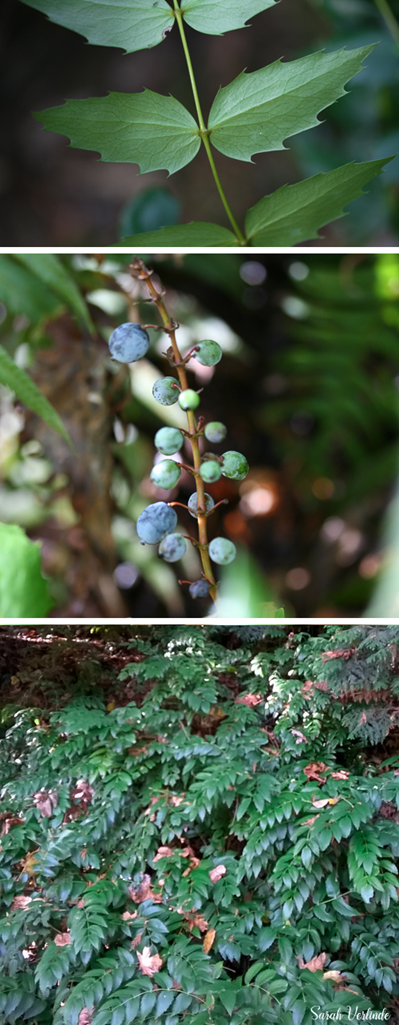Dull Oregon grape
Mahonia nervosa – Dull/Low Oregon Grape
Morphology

- Synonyms (older names): Berberis nervosa
- Family: Berberidaceae
- Plant Type: evergreen, low-growing shrub
- Leaves: Compound leaf (one stem with many leaves) oppositely arranged. Leaflets are glossy and dark green (similar to holly) with a prickly margin (edge). Underside is a lighter green.
- Notable feature: Leaflets generally do not have a central vein but seems a little off center.
Plant Growth
Height: up to 2 feet
Distribution and Habitat
- Distribution: Mostly Pacific Coast, California to British Columbia
- Habitat: forests and woods, light sun to mostly shady
Reproduction
- Flowers/Fruits: yellow flowers growing in a columnar cluster. Berries are round and purple-blue with a whitish hue.
- Flowering Season: March – June
- Generation: Perennial
Restoration and Conservation
Oregon grape is a fairly easy plant to grow and cultivate and makes a great garden or restoration plant, especially for shady areas under trees. The flowers are yellow and quite fragrant which attracts pollinators during the spring. The berries are a great food source for birds and mammals during the summer and fall. Since it is an evergreen shrub, it provides foliage cover for small animals during the winter months.
Ethnobotany
Mahonia nervosa and M. aquifolium contain alkaloid compounds including berberine which has been used for medicinal uses supporting immune health and strong antibacterial properties. Native Americans harvested and used the sour berries as a food crop and used the roots for yellow dye.
References and Resources
- PFAF: Plants for a future [Internet]. c1996-2012 [cited 2019 Aug 10]. Available from: https://pfaf.org/user/plant.aspx?latinname=Mahonia+nervosa
- Tirmenstein, DA. Berberis nervosa. in: fire effects information system [Internet]. U.S. Department of Agriculture, Forest Service, Rocky Mountain Research Station, Fire Sciences Laboratory (Producer). c1990 [cited 2014 Dec 08].Available from: http://www.fs.fed.us/database/feis/
- WTU Image Herbarium: http://biology.burke.washington.edu/herbarium/imagecollection/taxon.php?Taxon=Mahonia%20nervosa
This article was written by Sarah Verlinde. For questions regarding the UWB/CC Plant Tour, contact Sarah at severlin@uw.edu.
